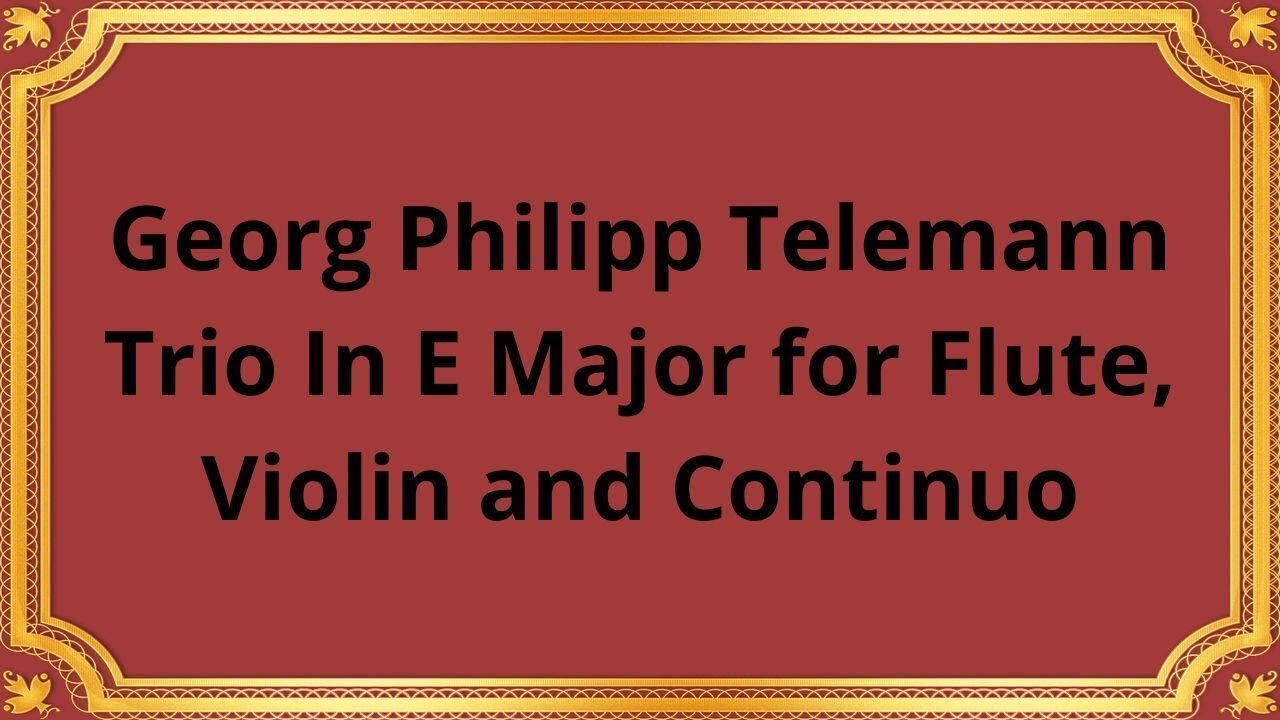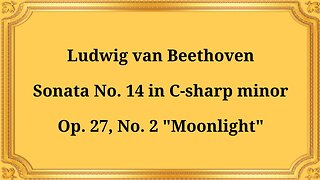Premium Only Content

Georg Philipp Telemann Trio In E Major for Flute, Violin and Continuo
#Telemann #ClassicalMusic #TrioInEMajor #Flute #Violin #Continuo #MusicalComposition #BaroqueMusic #ChamberMusic #InstrumentalMusic
BAROQUE ENSEMBLE OF PARIS
Georg Philipp Telemann, a celebrated composer of the Baroque era, has left an indelible mark on the world of classical music. Among his vast repertoire, the Trio In E Major for Flute, Violin, and Continuo stands as a remarkable composition that showcases his mastery of musical craftsmanship.
Telemann's Trio In E Major for Flute, Violin, and Continuo is a chamber music composition that emerged during the early 18th century. Comprising of four movements, the piece adheres to the traditional structure of the Baroque trio sonata: fast-slow-fast. It beautifully engages three distinct voices: the flute, the violin, and the continuo, typically performed on a harpsichord or cello.
Telemann's Trio In E Major embodies a tapestry of enchanting melodies, with each instrument taking turns to express its unique musical phrases. Telemann's melodic lines are characterized by their expressive charm, gracefulness, and intricate ornamentation, which captivate the listener's attention.
The Trio In E Major, like many Baroque compositions, embraces the art of counterpoint. Telemann skillfully interweaves the flute, violin, and continuo, creating a rich tapestry of harmonies and a delightful musical dialogue between the instruments. This interplay of voices results in a harmonious blend that enriches the overall texture of the piece.
Telemann's composition exemplifies the Baroque tonal palette through a captivating exploration of harmonic structures. His use of tensions and resolutions, along with the skillful manipulation of tonalities, creates a captivating musical journey filled with moments of tension, release, and emotional depth.
Telemann's Trio In E Major holds historical significance as it represents the flourishing era of chamber music during the Baroque period. Chamber music, designed for intimate settings rather than grand performances, allowed composers to experiment with intricate musical interactions. This piece reflects the era's growing interest in the dialogue between instruments and the development of individual instrumental virtuosity.
Furthermore, Telemann's Trio In E Major showcases his innovative approach to instrumental combinations. By combining the flute and violin, two distinct instruments with their own timbres and expressive capabilities, Telemann creates a unique blend of voices, allowing for a rich and diverse sonic landscape.
Conclusion:
Georg Philipp Telemann's Trio In E Major for Flute, Violin, and Continuo exemplifies the beauty and complexity of Baroque chamber music. Its enchanting melodies, harmonious dialogues, and historical significance make it a valuable addition to the repertoire of classical music. By exploring this remarkable composition, listeners can gain a deeper understanding of Telemann's compositional genius and appreciate the musical richness of the Baroque era. As we continue to celebrate the legacy of Telemann, the Trio In E Major remains an enduring testament to his artistry and enduring contribution to the world of classical music.
You have the opportunity to support the channel:
https://destream.net/live/RadSiarAl/donate
https://www.buymeacoffee.com/6355radsiaral
-
 18:26
18:26
Classical music_Music Inspiration
1 month agoLudwig van Beethoven Sonata No. 14 in C-sharp minor, Op. 27, No. 2 "Moonlight"
791 -
 3:05:49
3:05:49
TimcastIRL
4 hours agoNew DOCS PROVE Obama Hillary CONSPIRACY To SABOTAGE Trump Admin | Timcast IRL
186K55 -
 2:29:36
2:29:36
Laura Loomer
5 hours agoEP136: YOU'RE FIRED! White House Vetting Crisis Continues
18.2K9 -
 8:07
8:07
MattMorseTV
5 hours ago $0.32 earnedTrump just LOWERED PRICES by 75 PERCENT.
12.8K24 -
 LIVE
LIVE
Misfit Electronic Gaming
7 hours ago $0.13 earned"LIVE" "Blind Descent' +"Dollhouse of Dead" Playtest 10 Followers till we hit 1000! We CAN do this!
216 watching -
 21:53
21:53
Glenn Greenwald
7 hours agoMichael Tracey on the Street: What Do People Think of the Epstein Case?
107K54 -
 2:26:28
2:26:28
megimu32
4 hours agoOTS: Board Games Gone Wild! The Loud, Weird & Chaotic Games That Raised Us
13.5K6 -
 4:25:16
4:25:16
DamnDanieI
4 hours agoKill First, Loot Later – OTG Live
36.9K1 -
 56:41
56:41
Donald Trump Jr.
8 hours agoLies, Leaks, and Lawfare: Censorship Corruption Exposed | TRIGGERED Ep.263
140K121 -
 1:19:46
1:19:46
Precision Rifle Network
5 hours agoS4E25 Guns & Grub - Rex Is Back, I shot the 6.5PRC finally...
11.6K1